FISHING CRAFTS

Trawlers
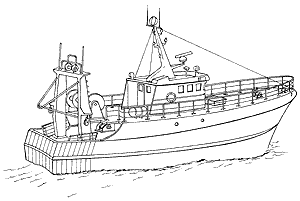
The fishing gear used by these vessels is trawls as and are provided with powerful engines tow the net and vessel at the appropriate trawling speed. They are fitted with trawl winches and mast and boom arrangement to haul the net on board and lift the cod-end over the deck. Depending on the area of operation and the trawl used, trawlers range in size from open boats with inboard motors up to large freezer and factory trawlers.
Bottom as well as midwater trawls can be used with only minor modifications of fishing equipment. Pair (two-boat) trawling achieves the spread of the net by towing the warps between two trawlers.
Seiners
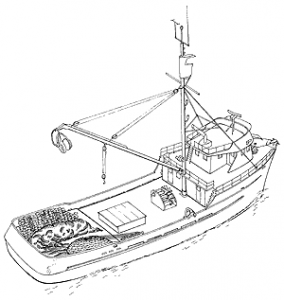
Seiners use surrounding and seine nets. They comprise a large group ranging from open boats and canoes up to large ocean going vessels. They are used to catch predominantly pelagic species. Relatively high manoeuvrability is required for operation of the surrounding and seine nets. Large seiners are therefore often fitted with lateral thrusters. To assist in fish school spotting observation crows nests are fitted on masts. The equipment of seiners consists usually of a power block and a net drum for hauling and stowing the net aboard and one or more winches for setting and hauling operations. Small boat and canoe type seine netting, all operations are generally performed by hand. For removing of fish collected in the purse, a brailer attached to a derrick is provided. Species of small size are often removed by pumping arrangement. In that case a pump is lowered from the derrick into the pursed seine and the fish is pumped through a hose and a water separator on deck into the hold.
Gill Netters
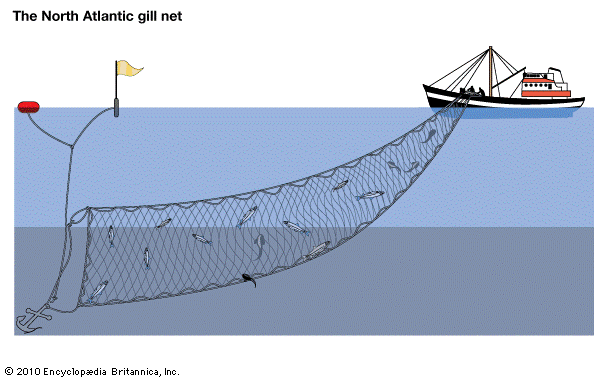
Boats and canoes use gill net in inland waters. The decked small gill netters fish in coastal waters and medium sized vessels operate gillnets in offshore. Small gillnetters have their wheelhouse either aft or forward. On medium sized vessels, using drifting gillnets and called drifters, the bridge is usually located aft. For drifters it is essential that they lay to windwards when drifting with the net. They are therefore often fitted with a steadying sail. On small vessels setting and hauling operations are performed by hand. Larger vessels are often equipped with hydraulic net haulers or net drums.
Dredgers
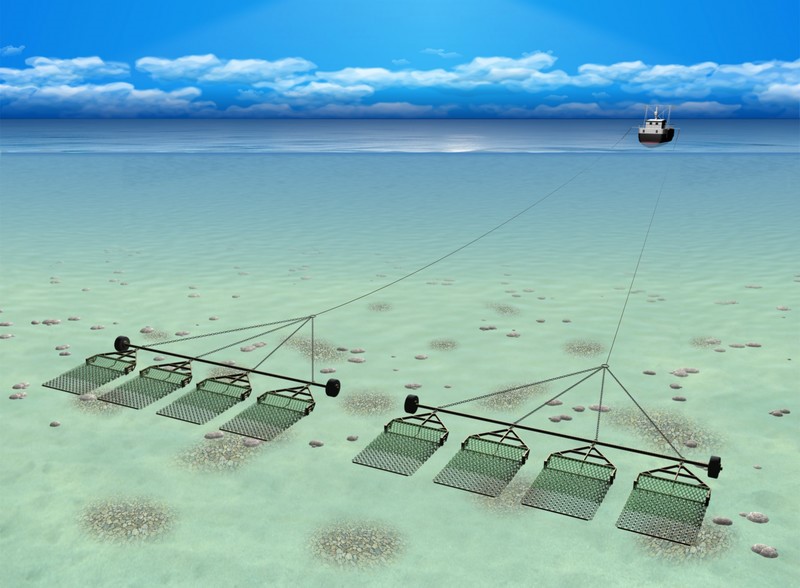
Dredge fishing vessels use a dredge for collecting molluscs from the bottom. The vessel drags the gear and the power requirements can therefore be similar to those of a small trawler. A powerful water pump is necessary to operate the water jets of a mechanical dredge. For lowering and lifting of the dredge, derricks and winches are installed. Small boat dredges are operated from boats and other small vessels. Some small inshore dredgers operating in shallow waters can also push a gear fixed to a beam extended from the bow.
Long liners
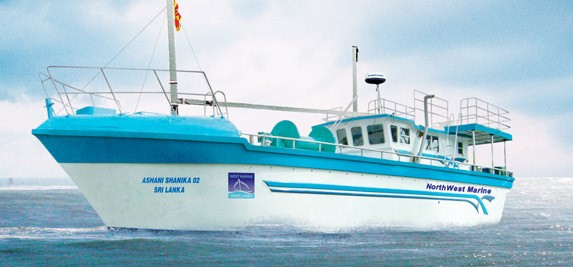
Long lines can be operated from vessels of any size adapted for the length of long line to be set. Bottom long lines are placed on or near the bottom and drifting long lines are maintained at the surface or at a certain depth by means of floats. In typical arrangements the gear is hauled from the bow or from the side with a mechanical or hydraulic line hauler and the lines are set over the stern. The wheelhouse can be situated aft or forward,but on larger vessels the bridge is generally placed aft. Several automatic or semi-automatic systems are used on bigger boats to bait the hooks and to shoot and haul the lines.
Pole and line vessels
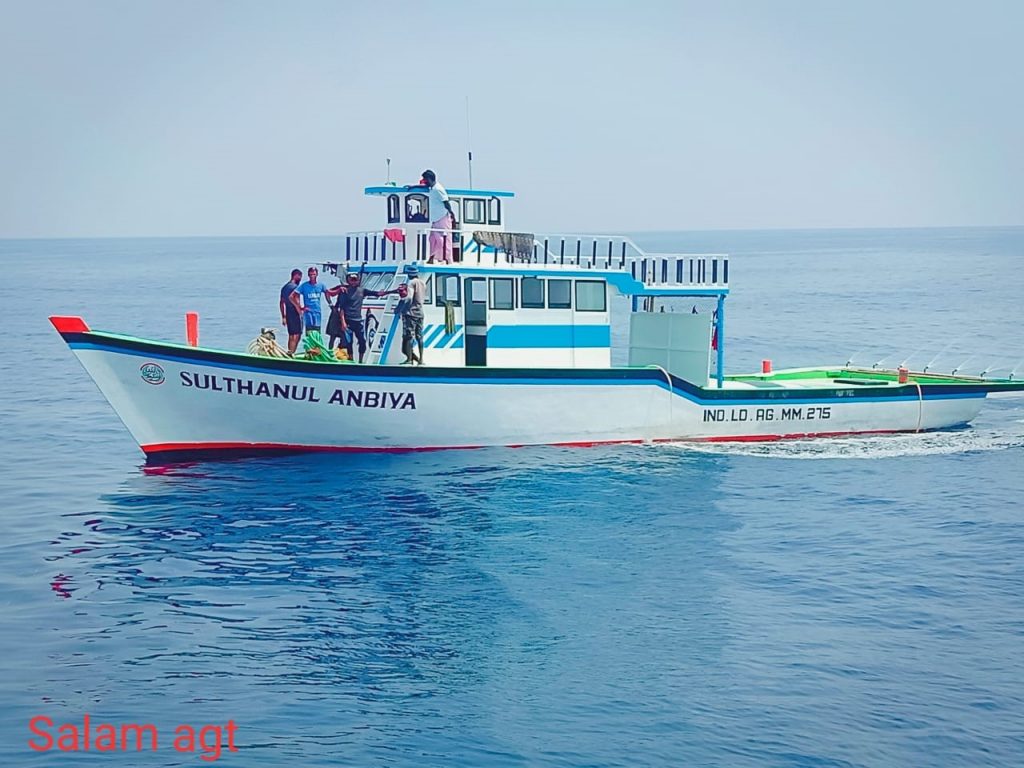
On these vessels, used primarily for catching of tuna and skipjack, the fishermen stand on the railing or on special platforms and fish with poles, to which a line with hook is attached. Tanks with live bait and a water spray system for fish attraction are typical features of these vessels. Because live bait is used to attract fish, the fishing method is also known as live-bait fishing. Two types of pole and line vessels can be distinguished: the Japanese type, the American type.
Trollers
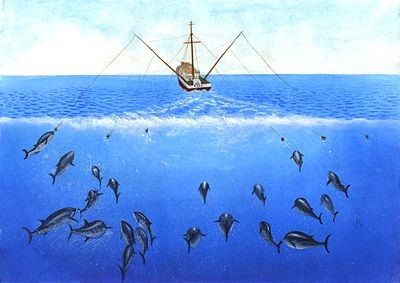
Equipped for catching pelagic fish swimming close to the surface these vessels tow a number of lines fitted with lures. The lines are attached to trolling booms which are raised and lowered by topping lifts and fore and aft stays. Hydraulic or electrically powered reels (gurdies) are frequently used to haul in the lines. According to area of operation, vessels may be laid out with wheelhouse and mast either forward or in the after part of the vessel.
Vessel using pump for fishing
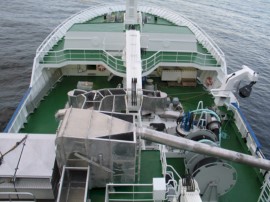
These vessels are provided with pumps of special construction. During the fishing operations the pump is lowered under the surface of the water. The pump is suspended on the hook of a derrick and is operated from the vessel’s electrical plant. Small fishes attracted by light from a lamp situated above the suction side of the pump are sucked and pumped with water on board, where a fish water separator is installed.
Multipurpose vessels
These are vessels which are equipped for alternative use of two or more different fishing gear without major modifications to the vessels’ outfit and equipment. The simplest examples of this concept are traditional open craft which operate one of the surrounding net types of gear, e.g., purse seine, during the seasonal appearance of pelagic species and handlines for demersal fish during the remainder of the year – no special features or equipment are used and the appearance of the craft is unchanged. Other examples of combinations in common use are gillnetter/longliner, trawler/gillnetter, trawler/purse seiner etc., with a variety of other gear being used in cases where gear and equipment investment is not high and layout changes minimal, e.g., a gillnetter may use handlining, trolling and trap fishing when seasonal variations are appropriate.
Motherships
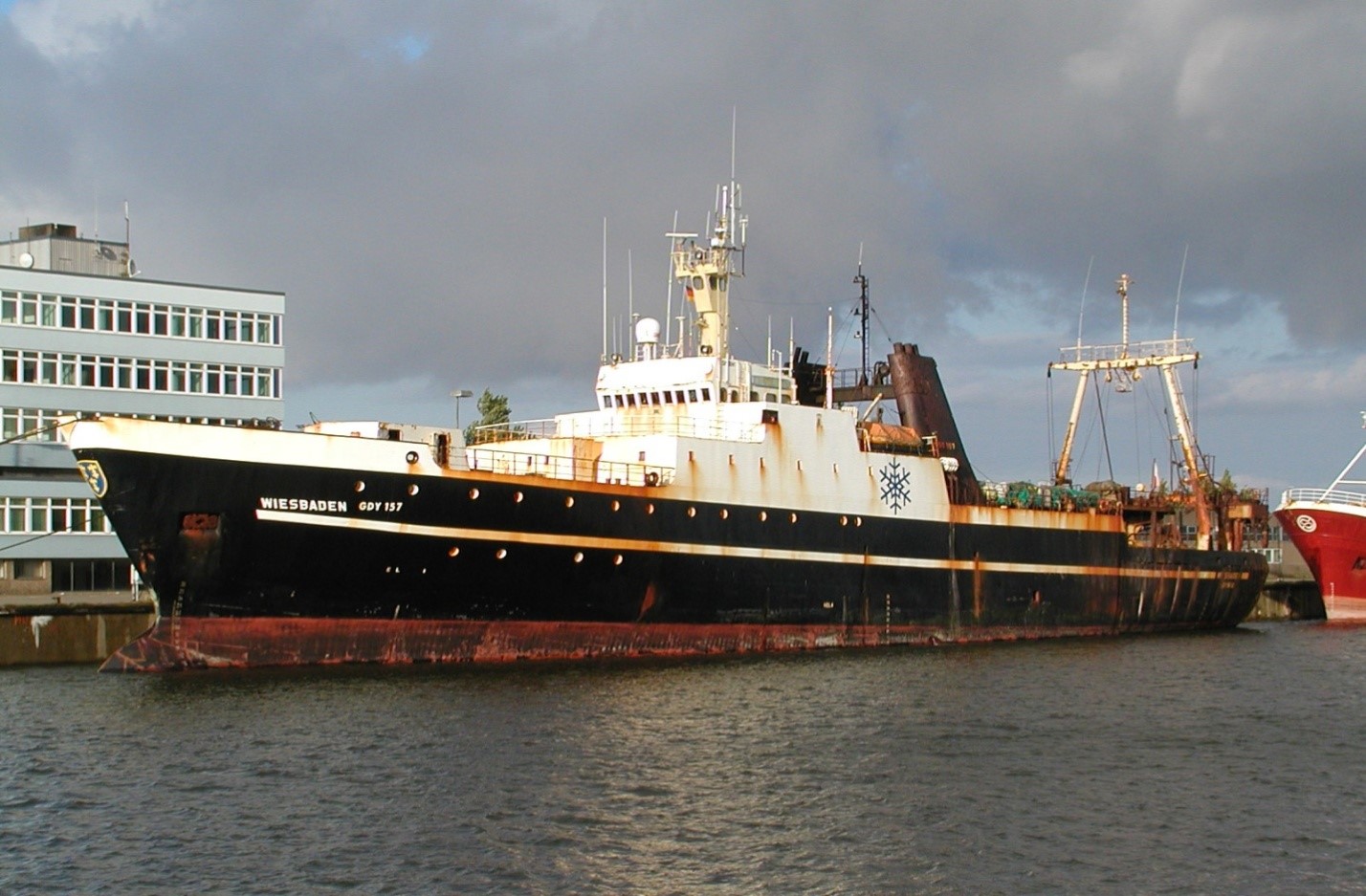
These vessels provide fishing vessels at sea with supplies of fuel, provisions, fresh water and other consumable goods, transfer the catch from the vessels, process and preserve the fish, render medical and social services to the crews. They also transport and land fish products in port. The term “mothership” is also used for vessels which carry on board small fishing vessels; on arrival, at the fishing grounds the fishing vessels are launched and perform the fishing operations. The catch is transferred to the mothership for processing and preserving. At the end of the fishing period the fishing vessels are hauled aboard and the mothership returns to the port.
Fishery research vessel
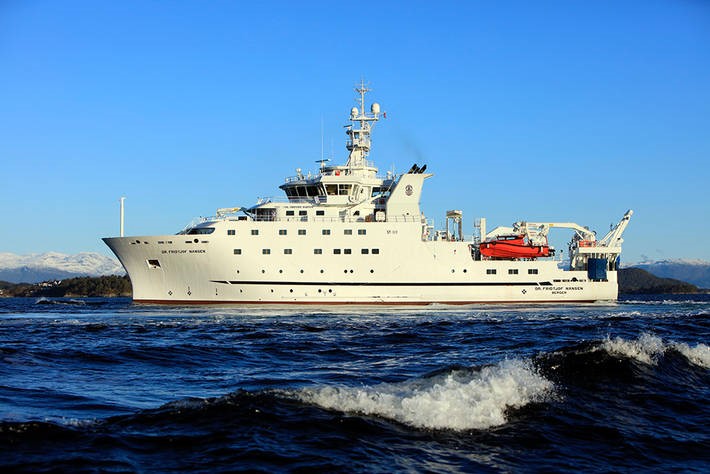
Research vessels are mainly engaged experimental fishing using various gear experiments. The size of fishery research operation and on research programmes. The vessels are usually fitted for the operation of two or more fishing gear. Special winches for taking samples and apparatus for measurements of environmental characteristics are provided. The accommodation comprises space for laboratories and quarters for scientific staff. Store rooms for instruments and samples are also provided.
